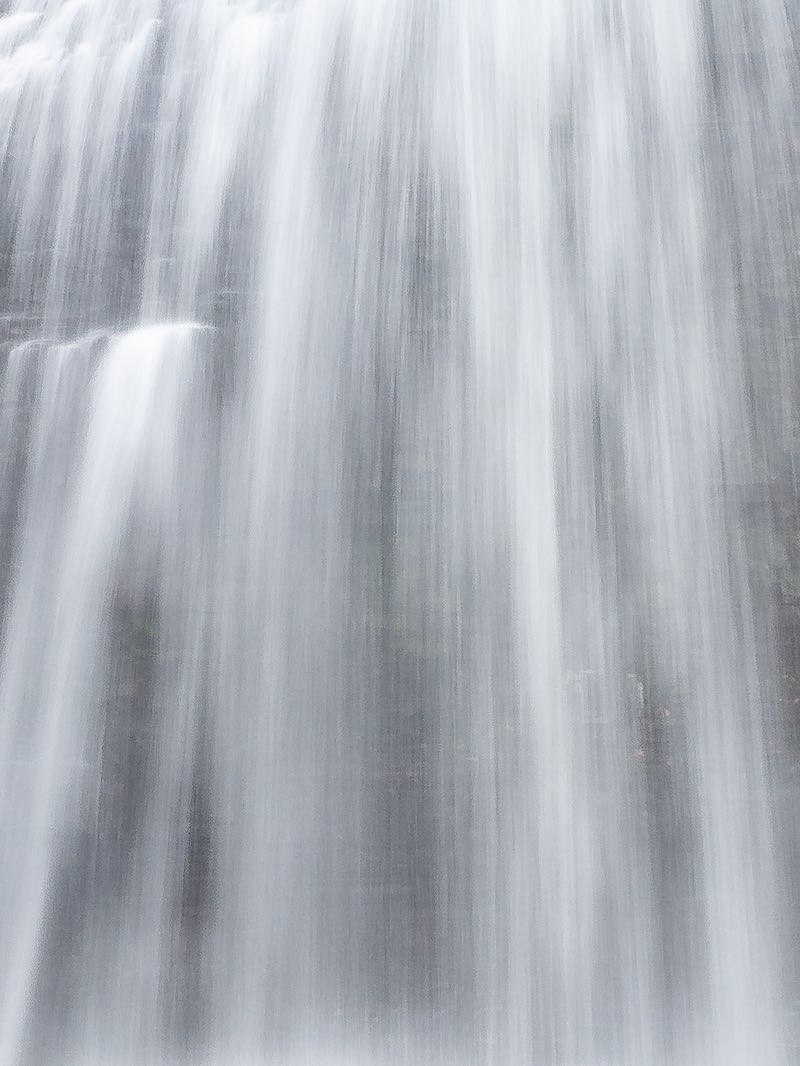






Hydrology is the study of how water flows over (and under!) the Earth’s surface. It can explain why some waterfalls are huge and others are tiny. It also explains why they look differently through time.
All of the water falling over a waterfall started out as rain or snow. Half of this evaporates, but the rest either infiltrates to become groundwater, or flow across the ground surface as runoff.
Surface runoff and groundwater both flow towards streams. Runoff can reach a stream within hours to days, but groundwater can take months or even years to pop out at a stream.


The amount of water that flows towards a stream is controlled by the size of the stream’s watershed. This is the area of land that collects and guides water overland and underground towards the stream.
A larger watershed generally directs more water over a waterfall. The watershed that feeds Niagara Falls is about 410,000 square kilometres in area, and causes a flow of about 28 million litres per second!
In contrast, Ancaster Creek flows over Sherman Falls at an average flow of less than 100 litres per second. This water is collected by a tiny watershed of just 8 square kilometres.
The characteristics of a watershed also impacts the flow at a waterfall. Watersheds in the northern part of Ontario tend to have lots of lakes and wetlands and very little human development.
These lakes and wetlands can release water more slowly and over a longer time period. Combined with the slow drainage of ground water, they act like giant wet sponges. This can keep streams (and waterfalls) flowing well after rains have stopped.
Watersheds in southern Ontario have few lakes and wetlands, but lots of hard surfaces, farm fields, and engineered drainage. These watersheds drain much quicker. The imaginary "sponge" dries out sooner, and less water is left for waterfalls.


Regardless of the watershed size or character, every stream or river generally follows a seasonal pattern of flow. Flows are usually highest in spring, when snow melts and the ground is already saturated. By late summer and early fall, the soil has been dried out due to evapotranspiration by plants.
At Sherman Falls, for example, the flow ranges from as high as 2500 litres per second in March to as low as 8 litres per second in August.
Niagara Falls is an oddball. The massive size of the four Great Lakes feeding the Niagara River keeps flow consistent all year. Only a few other falls have consistent flows. One is Rideau Falls, which is kept flowing due to water level management in the Rideau Canal system.
If you visit most waterfalls during mid- to late-summer (like most people do) you can often expect flows to be at their lowest. This is especially likely where the waterfall's watershed is mostly agricultural or urbanized.
Even after a big rain storm in summer, waterfall flows can stay low. This is because the soil, wetland and lake “sponge” that provides flow to a stream can be dried out. It can take several rains to wet the sponge back up to a point where it sends water to a stream again.


The greatest flows at waterfalls occur in spring. March, April and May are waterfall season. Not everyone is able to travel at this time of year, but if you can, you will be rewarded with high flows, no crowds and no bugs.
Summer flows can still be respectable at many waterfalls, but it's important to keep tabs on the weather. Has it been hot and dry for a few weeks? If so, expect that the river will be running low.
It's true that low flow at waterfalls can initially be disappointing. But if this is the only time you can travel, you can still find it enjoyable. Just manage your expectations.


Join our Facebook community to share tips, photos and updates. Operating since 2011, this well-moderated, respectful, and informative group is the hub of Ontario's waterfalling community. (Photo by Martin Van Opstal)
